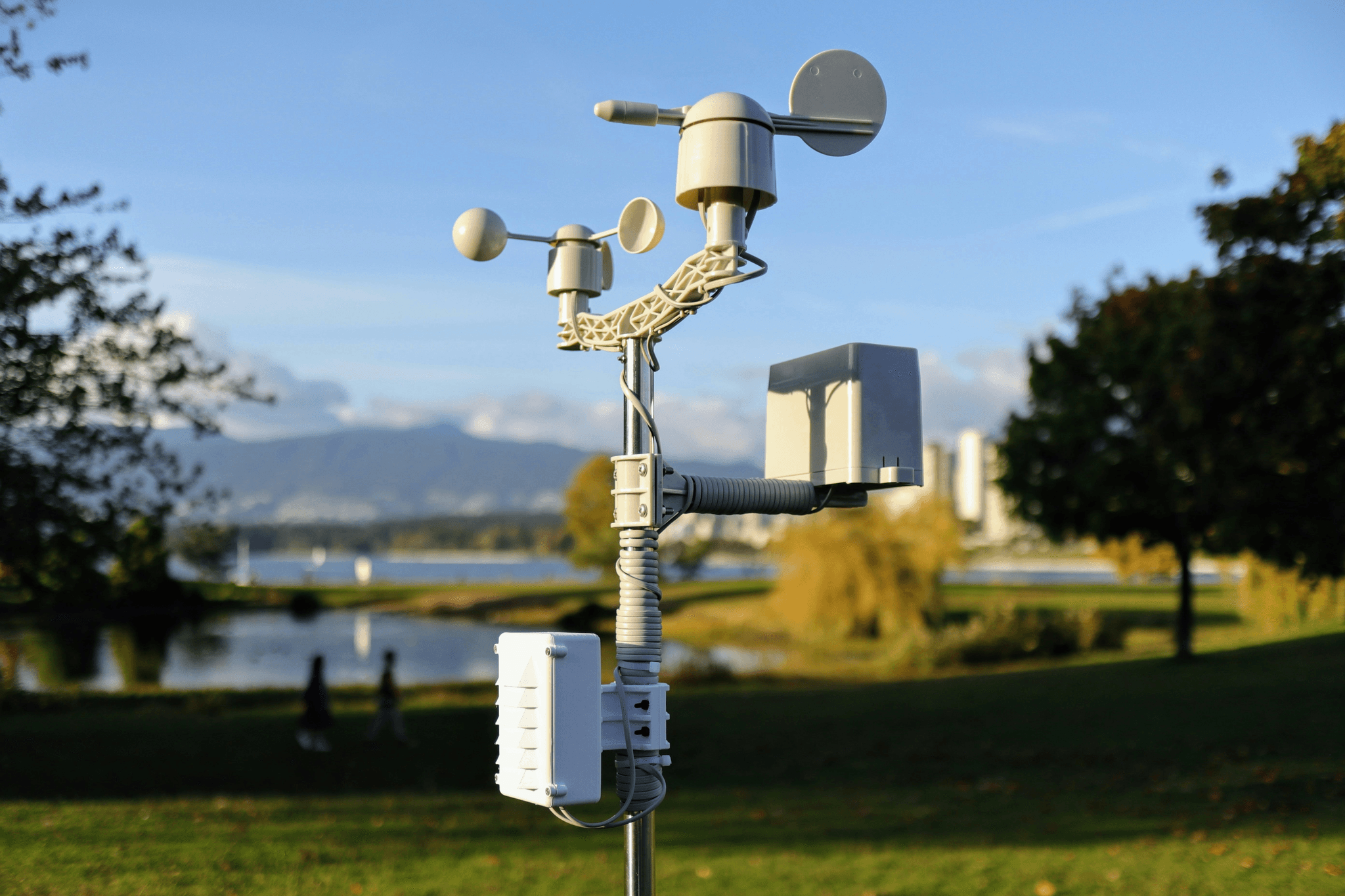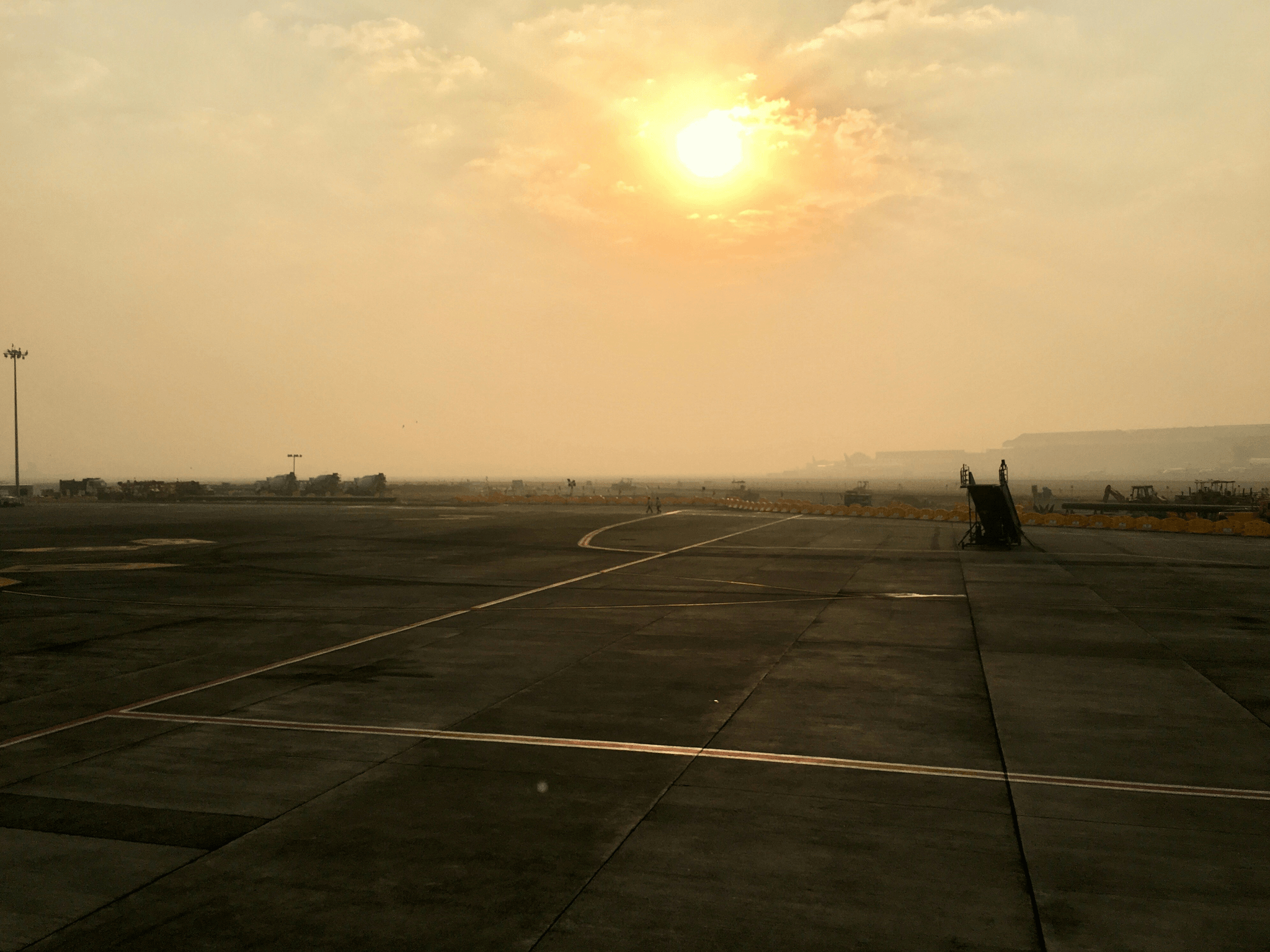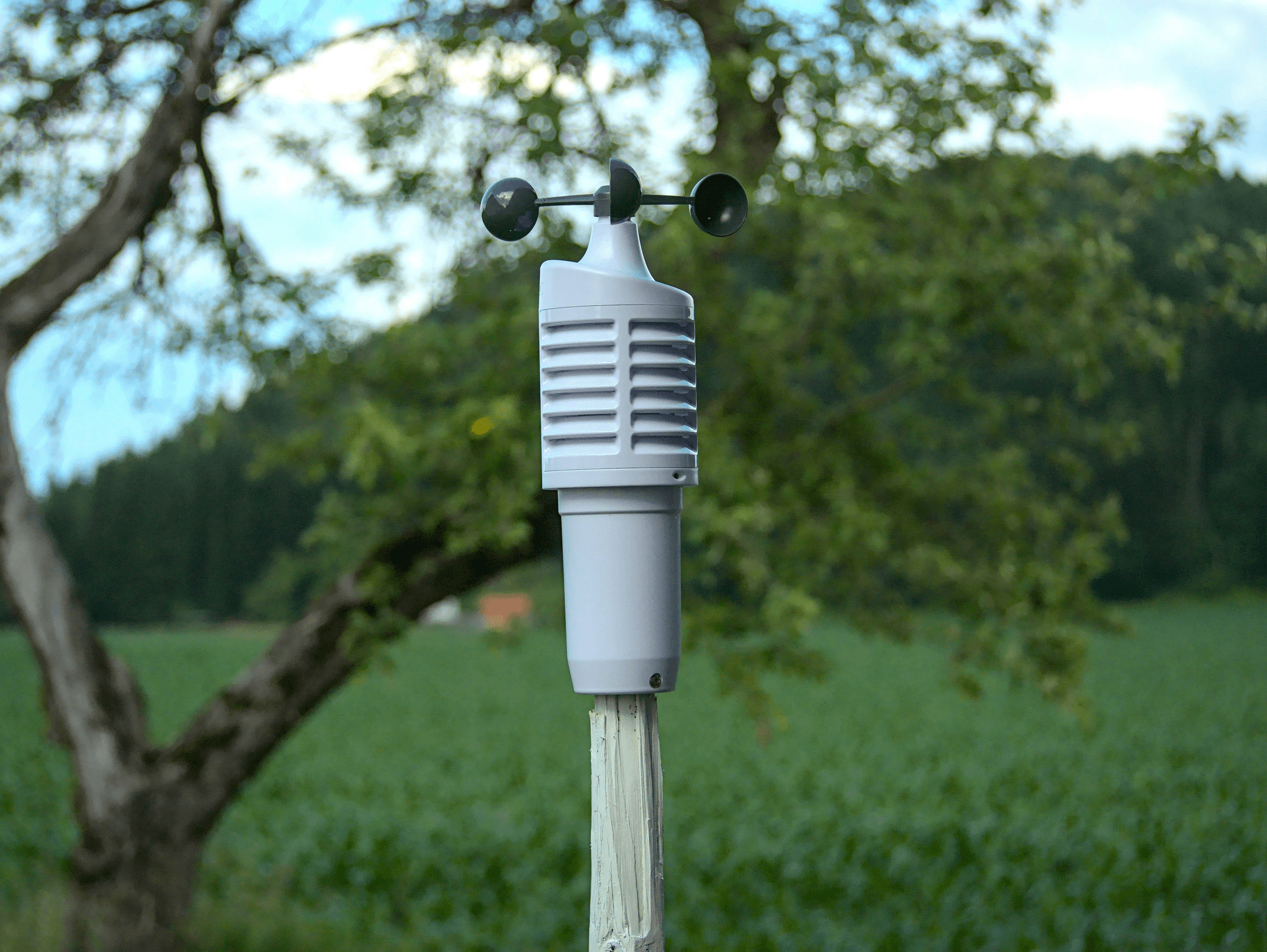Introduction

In the ever-evolving world of aviation, accurate weather information is not just a luxury; it's a necessity. Automated Weather Observing Systems (AWOS) play a pivotal role in providing real-time data that is essential for flight safety and efficiency. With innovations like Haisen's Aviation Automatic Weather Observation Station, airports are now equipped with advanced technology that ensures pilots and air traffic controllers have access to critical weather parameters at all times.
Understanding Automated Weather Observing Systems
Automated Weather Observing Systems are sophisticated tools designed to monitor and report weather conditions continuously. These systems utilize an array of sensors to collect data on variables such as temperature, wind speed and direction, visibility, cloud height, and atmospheric pressure. By automating this process, AWOS eliminates human error while providing timely updates that are crucial for maintaining safety in aviation operations.
Importance of Weather Stations in Aviation
Weather stations are vital components within the aviation ecosystem as they supply accurate meteorological data directly impacting flight operations. Without reliable weather information from sources like AWOS, pilots would struggle to make informed decisions during takeoff and landing phases. The presence of automatic airport weather stations ensures that both pilots and air traffic controllers can respond swiftly to changing conditions, thereby enhancing overall safety.
Key Features of Haisen's AWOS
Haisen's Aviation Automatic Weather Observation Station stands out due to its comprehensive suite of features designed specifically for airport environments. It employs advanced sensors capable of measuring various atmospheric parameters with unparalleled precision and reliability. Moreover, its real-time data collection capabilities ensure that all relevant parties have immediate access to crucial information—an indispensable asset when considering questions like What is the difference between AWSS and AWOS? or How much does an AWOS weather station cost?
The Functionality of AWOS

Automated Weather Observing Systems (AWOS) are at the forefront of aviation safety, particularly in ensuring that pilots have access to timely and accurate weather information. Haisen's Aviation Automatic Weather Observation Station is a prime example of this technology, designed specifically for continuous real-time weather monitoring at airports. By integrating advanced sensors and data processing capabilities, Haisen's AWOS plays a pivotal role in modern flight operations.
How Haisen's AWOS Operates
Haisen's AWOS operates through a sophisticated network of sensors that continuously collect meteorological data. This automatic airport weather station processes information related to temperature, humidity, wind speed and direction, visibility, cloud height, and atmospheric pressure. The seamless integration of these components allows for swift data transmission to air traffic control and pilots, ensuring they have the most current weather conditions at their fingertips.
Real-Time Data Collection Capabilities
One of the standout features of Haisen's AWOS is its real-time data collection capabilities. This system not only gathers weather information but also updates it instantaneously to reflect changing conditions—a crucial aspect when considering factors like sudden storms or shifting winds. With such timely updates, pilots can make informed decisions about takeoffs and landings based on accurate readings from this automatic airport weather station.
Sensors Used in AWOS Technology
The effectiveness of an automated surface weather station hinges largely on its sensors—Haisen’s AWOS employs a range of high-precision instruments to capture essential meteorological parameters accurately. These sensors measure everything from wind speed and direction to temperature variations with remarkable precision. By utilizing cutting-edge technology in sensor design, Haisen ensures that airports receive reliable data critical for safe flight operations while addressing questions like What is the difference between AWSS and AWOS? through clear differentiation in functionality.
What is the Difference Between AWSS and AWOS

Comparing Automatic Weather Systems
The key distinction between these two automatic weather systems lies in their functionality and application. AWOS is specifically designed for airports, providing essential weather information that directly impacts flight safety and efficiency. In contrast, while AWSS can also gather weather data, it may not always be equipped with the same level of detail or immediacy required for aviation operations, making it less suitable for critical airport environments.
For those pondering how much does an AWOS weather station cost?, it's worth noting that investment in an automatic airport weather station like Haisen’s can vary based on features and installation requirements. However, the price reflects its robust capabilities in delivering timely updates crucial for pilot decision-making during flight operations. This tailored approach ensures that airports are equipped with precise data to enhance safety protocols.
Unique Features of Haisen's AWOS
Haisen's Aviation Automatic Weather Observation Station stands out from other systems due to its comprehensive suite of sensors designed to monitor a wide array of atmospheric conditions continuously. This includes temperature readings, wind speed and direction measurements, visibility assessments, cloud height determinations, and atmospheric pressure evaluations—all vital elements for safe flying conditions. The integration of advanced technology into Haisen’s system allows airports to maintain a high standard of operational readiness.
Moreover, many automated surface weather stations are placed at airports because they deliver real-time information essential for both pilots and air traffic controllers alike. The unique features of Haisen's AWOS not only enhance situational awareness but also contribute significantly to reducing operational risks associated with unpredictable weather changes at critical moments during takeoff or landing.
Applications of AWOS in Aviation
The applications of an automatic airport weather station extend beyond merely reporting current conditions; they play a pivotal role in flight planning and execution as well. For instance, pilots rely heavily on accurate data from Haisen's AWOS when making decisions about takeoffs or landings—especially under challenging conditions where visibility is compromised or wind patterns shift unexpectedly.
Furthermore, understanding why many automated surface weather stations are placed at airports sheds light on their significance in maintaining aviation safety standards globally. By providing continuous updates on changing meteorological parameters throughout the day and night, these systems ensure that flights operate within safe limits while minimizing delays caused by adverse weather conditions.
In summary, distinguishing between AWSS and AWOS clarifies their respective roles in aviation; each system has its strengths but serves different audiences within the industry landscape—particularly where precision matters most: at our airports!
Cost of Installing an AWOS Weather Station

When considering the installation of an automatic airport weather station like Haisen's Aviation Automatic Weather Observation Station, several factors come into play regarding pricing. The complexity of the system, including the types of sensors and technology used, can significantly influence costs. Additionally, site preparation and installation logistics at airports contribute to the overall investment required for such a sophisticated system.
Factors Influencing AWOS Pricing
The cost of an AWOS weather station is affected by various factors that airport authorities must consider. First, the choice between different configurations—such as basic models versus advanced systems with enhanced sensor capabilities—can lead to varying price points. Other considerations include installation costs, ongoing maintenance expenses, and whether the station will require additional infrastructure to support its operation.
Furthermore, geographical location plays a role in pricing; airports in remote areas may face higher transportation costs for equipment delivery and installation services. The specific requirements set by aviation authorities can also impact costs; more stringent regulations may necessitate more advanced technology or additional features. Ultimately, understanding these factors helps airports gauge how much does an AWOS weather station cost when planning their budget.
Initial Investment vs Long-Term Benefits
While the initial investment in an AWOS weather station might seem daunting for many airports, it is essential to weigh this against long-term benefits that such a system provides. An automatic airport weather station like Haisen's can offer real-time data collection capabilities that enhance safety and efficiency in flight operations over time. This means potential savings on operational disruptions due to adverse weather conditions that could otherwise lead to costly delays or accidents.
Moreover, accurate and timely weather information significantly improves pilot decision-making processes during takeoff and landing phases. By reducing uncertainty related to changing weather conditions, airports can enhance their service reliability and attract more airlines looking for dependable operations. Thus, when evaluating whether to install an automatic airport weather station, it's crucial not only to consider upfront costs but also the substantial long-term advantages it brings.
Funding Options for Airports
Airports often seek funding options when considering investments in automated surface weather stations like Haisen's AWOS due to budgetary constraints or competing priorities. Various federal grants and programs aimed at enhancing aviation safety may be available specifically for installing advanced meteorological systems at airports across the country. Additionally, partnerships with private companies specializing in aviation technology could alleviate some financial burdens while ensuring access to state-of-the-art equipment.
Local government initiatives may also provide funding opportunities tailored toward improving infrastructure at regional airports; this could help facilitate projects involving automated airport weather stations without straining existing budgets too heavily. It's essential for airport management teams to explore all available funding avenues thoroughly so they can make informed decisions about investing in critical technologies like automated surface weather stations.
The Role of Weather Stations at Airports

Weather stations play a pivotal role in the aviation ecosystem, particularly at airports where accurate data is essential for flight safety and efficiency. An automatic airport weather station, like Haisen's Aviation Automatic Weather Observation Station, delivers continuous real-time weather updates that are vital for both pilots and air traffic controllers. This information helps to mitigate risks associated with unpredictable weather conditions, ensuring that operations run smoothly.
Importance of Accurate Weather Data
Accurate weather data is the backbone of safe aviation operations, making it crucial for every airport to have reliable weather monitoring systems in place. Without precise information provided by an automatic airport weather station, pilots could face unforeseen challenges during takeoff and landing phases. Moreover, understanding What is the difference between AWSS and AWOS? can help clarify how these systems work together to enhance safety by providing complementary data streams.
The need for accuracy cannot be overstated; even minor discrepancies in reported conditions can lead to significant operational disruptions or safety hazards. That's why Haisen's AWOS employs advanced sensors that measure a variety of meteorological parameters such as wind speed, temperature, and visibility. These measurements ensure that all stakeholders have access to the most reliable information when making critical decisions.
Integration with Flight Operations
The integration of automated surface weather stations into flight operations streamlines communication between pilots and ground control teams. When airports utilize systems like Haisen's AWOS, they can relay real-time updates directly to cockpit crews, ensuring that everyone is on the same page regarding current conditions. This level of coordination minimizes delays and enhances overall operational efficiency.
Furthermore, many airports rely on their automatic airport weather station not just for immediate flight operations but also for long-term planning purposes such as runway maintenance schedules or emergency response strategies. By analyzing historical data collected from these stations, airport authorities can make informed decisions about resource allocation and infrastructure improvements over time.
Impact on Pilot Decision-Making
Pilot decision-making relies heavily on timely and accurate weather information provided by automated surface weather stations at airports. Informed choices regarding takeoffs and landings hinge upon real-time data about wind patterns, visibility levels, and other atmospheric conditions supplied by systems like Haisen’s AWOS. When pilots know exactly what they're dealing with outside their cockpit windows—thanks to precise readings—they can make safer choices.
Moreover, understanding How much does an AWOS weather station cost? becomes relevant here because investing in quality equipment leads directly to improved pilot confidence during critical moments in flight operations. While costs may vary based on features and capabilities offered by different models—including those from Haisen—the long-term benefits often outweigh initial investments when it comes to safety enhancements in aviation.
Finally, it's worth noting that many airports have embraced modern technology solutions like automatic airport weather stations not just as a regulatory requirement but as a commitment to excellence in service delivery—ultimately benefiting everyone involved in air travel from airlines down to passengers themselves.
Strategic Placement of Automated Surface Weather Stations

The strategic placement of automated surface weather stations (AWOS) is essential to ensure that accurate and timely weather data is available for aviation operations. Airports serve as prime locations for these systems due to their unique operational demands and the necessity for real-time information. With the high volume of air traffic, having an automatic airport weather station nearby significantly enhances safety measures and operational efficiency.
Why Airports are Prime Locations
Airports are bustling hubs of activity where accurate weather information can make a significant difference in flight safety. The question Do airports have weather stations? can be answered with a resounding yes, as they require constant monitoring of atmospheric conditions to support flight operations. By placing many automated surface weather stations at airports, aviation authorities can provide pilots and air traffic controllers with critical data that influences takeoff, landing, and in-flight decisions.
Enhancing Safety with Real-Time Information
Real-time information from an automatic airport weather station ensures that pilots have access to up-to-the-minute updates on changing weather conditions. This capability directly contributes to enhancing safety by allowing immediate adjustments to flight plans based on current data such as wind speed, visibility, or storm developments. The integration of these systems into airport operations means that decisions can be made swiftly and accurately, reducing the risks associated with adverse weather.
Examples of Effective Weather Data Use
One striking example of effective use of AWOS technology is during severe thunderstorms when quick decision-making is crucial for both takeoffs and landings. Airports equipped with Haisen's Aviation Automatic Weather Observation Station can relay real-time updates about rapidly changing conditions directly to pilots in the cockpit. Another instance involves how airports utilize this data during winter months; having precise measurements from their automatic airport weather station allows them to manage de-icing procedures efficiently while ensuring safe runway conditions.
Conclusion
In summary, Automated Weather Observing Systems (AWOS) play a pivotal role in the aviation industry by providing real-time weather data essential for flight safety and operational efficiency. Haisen’s Aviation Automatic Weather Observation Station stands out for its advanced technology and reliability, ensuring that pilots and air traffic controllers have access to critical information at all times. Understanding the differences between automatic airport weather stations and other systems like AWSS enhances our appreciation of their unique contributions to aviation.
Key Takeaways on AWOS Technology
AWOS technology is designed to offer continuous updates on various weather parameters, significantly benefiting airport operations. One of the primary questions often asked is, What is the difference between AWSS and AWOS? While both systems provide valuable data, AWOS focuses specifically on delivering real-time observations directly relevant to flight operations, making it indispensable for airports. Moreover, knowing how much an AWOS weather station costs can help airports assess their budgetary needs while recognizing the long-term savings that accurate weather data can provide.
Future of Automated Weather Monitoring
The future of automated weather monitoring looks promising as advancements in sensor technology continue to evolve. With increased accuracy and reliability, automatic airport weather stations will likely become even more integral to aviation safety protocols worldwide. As airports invest more in these systems, we can expect a shift toward enhanced integration with other technologies that support flight operations—ultimately leading to safer skies for everyone involved.
The Crucial Role of Haisen’s AWOS in Aviation
Haisen’s automatic airport weather station is not just a piece of equipment; it's a lifeline for pilots navigating through variable conditions. Airports have long recognized the importance of having reliable weather stations on-site—after all, do airports have weather stations? Yes! These installations are strategically placed at airports because they provide essential data that influences pilot decision-making and overall flight safety. With Haisen's advanced capabilities, aviation professionals can make informed choices based on accurate real-time information.
